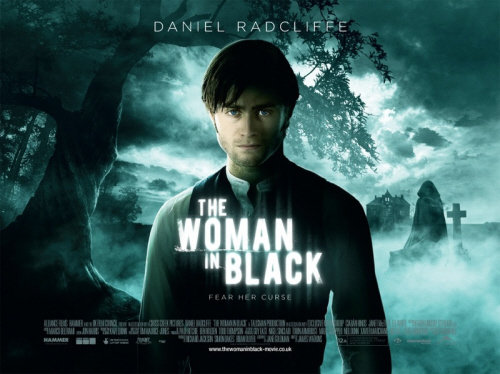
James Watkins is a director with a keen sense of the genre he’s currently working in. That’s evident not only in his film, The Woman in Black, but here as well. Having also directed the critically acclaimed Eden Lake, I was curious what influenced the man and what excited him about Woman, being now the second horror film he directed. As you’ll find out, Watkins is a guy whose career will be well-served by his appreciation for horror’s history and what makes the genre work on a psychological level:
James Watkins: Hi, Tim! How are you?
Tim: I’m doing well. How are you doing, sir?
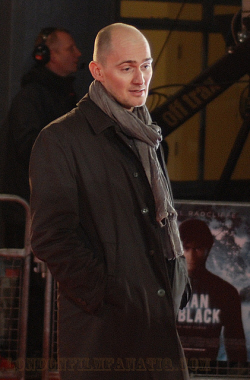 JW: Very well, nice to talk to you.
JW: Very well, nice to talk to you.
Tim: I’m with CHUD.com.
JW: Yeah, I know, absolutely.
Tim: Well if it’s cool I’ll just get started. So I had read that you came on board after the script for The Woman in Black was written. Were you familiar with Susan Hill’s novel?
JW: I was aware of the novel but I’d never read it. I’d read a couple of other Susan Hill books. I’d read I’m the King of the Castle, which is great book. But I hadn’t read The Woman in Black but I was interested in finding a ghost story. I’d tried to develop one and it hadn’t quite worked as I’d liked. Then I heard this was out there and coincidently they sent me the script by Jane Goldman and I read it and loved it. So we took it from there.
Tim: Jane Goldman seems to be in high demand right now.
JW: She certainly is, she’s a very talented writer.
Tim: No doubt, coming off of X-Men: First Class, The Debt, and Kick-ass. What was it about her script and this story that spoke to you?
JW: That’s a good question. It was really about the fact that, firstly, it was a very scary ghost story. But it was more than just sort of a delivery vehicle for scares. It had a heartbeat to it, it had emotion to it. It was a story of longing and of loss and of grief, and how people are warped by it and changed by it – all the characters of the film in different ways.
In that regard I thought: “Okay, we could make a really good horror / ghost story. We could make something that in some way had an emotional heartbeat to it.” So it had horror and heart.
Tim: This wasn’t your first horror film. Obviously you worked on The Descent 2 and then wrote and directed Eden Lake. Aside from the novel, what other horror influences did you see fit to incorporate into The Woman in Black?
JW: Oh, just so many! From The Innocence and The Haunting to some of the Spanish horror like The Orphanage, The Others. I can look at, in terms of color palate, I can look at early Technicolor Hammer films. I can look at Dario Argento. I can look at the design of the house, all though it looks very different, look at Kubrick in Shining for strategy and depth. I can look at Rosemary’s Baby and Polanski for looking around creepy corners and camera moves.
You know, you kind of are what you eat and I’ve consumed a lot of films. I could go on and on about influences. And most of them are probably unconscious.
Tim: You mentioned Hammer Films. This to me, out of the slate of new Hammer releases, feels the most Hammer-y. How does being a Hammer film affect your overall approach?
JW: I guess it’s from the way we tell the story. The nature of the story is such that it, you know it’s the guy, and he’s in the house. It’s quite in the architecture of it. It’s kind of this old school remote village, remote house. And it has all of the old gothic trappings which I suppose are quite Hammer.
You sort of pay homage to that but at the same time you want to try a new more modern techniques to keep it fresh and alive and accessible.
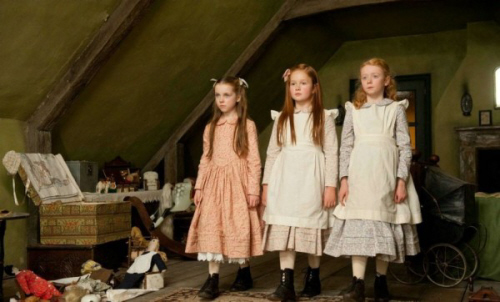
Tim: Right. Moving on a bit, having just said goodbye to the world of Harry Potter, this I believe is one of Daniel Radcliffe’s first projects since Harry Potter and the Deathly Hallows Pt. 2.
JW: His first, yeah.
Tim: Was there anything in his performance in this film that surprised you? I noticed that he doesn’t speak for long stretches of time, but still manages to carry it. And then also I was curious how he became part of the project.
JW: I‘m really impressed by Dan! It’s interesting because it was a weird opportunity for him. When I met him I thought: “Here’s a guy that wants to challenge himself and be challenged.” I pushed him hard and he pushed himself hard and he was really committed.
You know, he’s played the same role for 10 years in a hugely successful franchise. He knows that people will carry that association. So he’s wanting to sort of try different things. We met in LA, we sat and we talked. We talked about the film, we saw the film in the same way, we saw the character in the same way. And then we screen tested his look and made him… just fundamentally, Dan’s a very handsome guy and he’s been playing somebody much younger than himself. He’s a young man. So we wanted to make him look, give him a really strong look. So from the outset, essentially we saw fit to counter any of these associations.
From the movie he looks very different. Also, the performance is very different. And it should be because it’s a very, very different character and it’s a very different type of film. And what I’m really proud of is the sense of sadness and longing – the weight of melancholy that Dan carried in the film. This sense of loss. And I do think it’s a mature, restrained performance in a slightly different idiom from what he’s done. So I’m very proud of what Dan’s done.
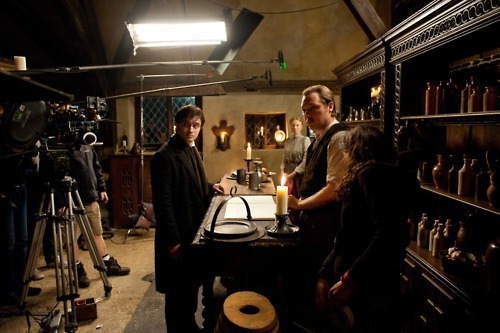
Tim: I noticed that he becomes more and more unhinged and withdrawn as the movie goes on, which I thought was a nice touch.
JW: Yeah, thank you. Absolutely.
Tim: One thing that surprised me about this as a horror film, and especially a PG-13 one, is that the majority of characters killed off are kids. Did you ever feel the need to pull back in certain scenes out of concern that audiences would get uncomfortable?
JW: It’s a good question. I think with the burning girl we pulled back a bit. The thing about the film is that, in terms of rating, there’s no real violence, there’s no real gore, there’s no swearing, no sex.
But what’s been really interesting is that, I’m touring with the film in England and showing it to audiences, and the feedback from the beginning has been “Man, it’s really scary!” And it’s an interesting discussion that we have. Because there are a lot of horror films that are nasty, if you know what I mean. But nasty isn’t necessarily scary. It’s the “less is more approach” here. Letting people’s imagination go to work in terms of shadows and what’s in the shadows, what’s lurking, what’s in the unknown. Those play on a much more psychological, and I think deeper level. It’s like the way ghost stories in novels work. The reader goes to work; their imaginations have to go to work. We always contended that what we can shoot is never going to be as scary as what people can imagine. And we were behold to that.
If you go back to all the classic films, anything pre-1965, it’s going to be PG-13. Some of the films still have devastatingly scary moments – because they’re very well crafted. They all work on indirection and playing off the imagination. So we were trying in some way to go back to a bit of that.
Tim: Yeah, and I felt like you used blood sparingly. It sounds like you didn’t meet a lot of limitations then in attaining the PG-13.
JW: No, I think it was all taking out shots of the burning girl. And it felt like the right thing to do. I don’t think seeing less is more scary and more disturbing, more interesting than just waving things in people’s faces.
Tim: It’s still an effective scene. Sitting in the theater last night and there’s a moments hesitation where you’re wondering if she’s going to go through with it (setting herself on fire) or not.
JW: Mm-hmm. It’s still quite shocking.
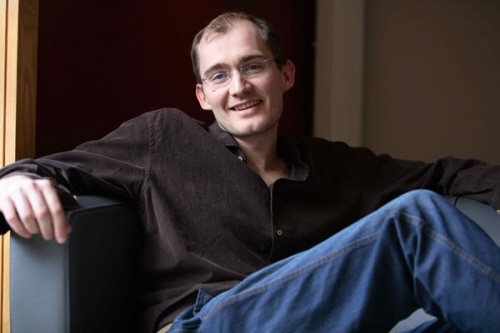
Tim: Extremely. How did you approach the effects to this film? I thought it was refreshing that CG was used at a minimum. It felt like you only used it when it was absolutely necessary.
JW: I’m so glad you say that! No, it was totally, totally our approach. I’m not a huge fan of the effects (CG) and I’m not a huge fan of 3D, either – which was brought up at one point and I said “Look, that’s not going to work.”
Again, it’s about “less is more.” I don’t like sort of CGI monsters. The more you can do things in camera and real, it carries it’s own reality.
Tim: Absolutely.
JW: You know what I mean? Yeah, when things start defying the laws of physics they start to lose me. We definitely tried to keep it real as much as possible.
Tim: You hit on this before, but overall I was wondering what your current thoughts are on the state of the horror genre. Specifically, where The Woman in Black fits in. It feels like it’s a rebuttal to a lot of trends that are happening right now by going in a more subtle direction.
JW: I think so. But look, it goes in a more subtle direction but that doesn’t mean it’s less scary I would say. People going to a horror film want to have a ride. You want to go on a roller coaster and you want to have a ride. I think our film gives people that. The experience of people in the UK, they’ve been saying that in spades, like “Oh man, it’s terrifying.”
And you know, I’m not trying to make a political statement. I love all sorts of different horror films and I’m happy to watch a gory film. But for this film, I think it’s appropriate. It’s a different type of film and I think there’s room in the market for that and actually, for some people, hopefully that will be a refreshing thing.
~
It definitely is. A big thanks to James Watkins for taking the time to chat with us. The Woman in Black opens in the US today.